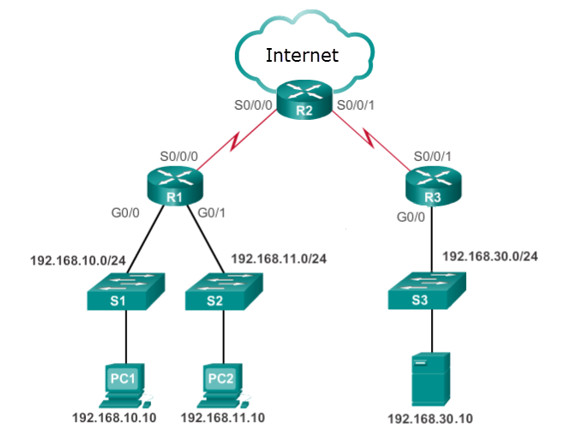Question:
Refer to the exhibit. Network 192.168.30.0/24 contains all of the company servers. Policy dictates that traffic from the servers to both networks 192.168.10.0 and 192.168.11.0 be limited to replies for original requests. What is the best ACL type and placement to use in this situation?

- extended ACL inbound on R3 G0/0
- extended ACL inbound on R1 G0/0
- standard ACL inbound on R1 G0/1
- standard ACL inbound on R1 vty lines
Explanation: Standard ACLs permit or deny packets based only on the source IPv4 address. Because all traffic types are permitted or denied, standard ACLs should be located as close to the destination as possible.
Extended ACLs permit or deny packets based on the source IPv4 address and destination IPv4 address, protocol type, source and destination TCP or UDP ports and more. Because the filtering of extended ACLs is so specific, extended ACLs should be located as close as possible to the source of the traffic to be filtered. Undesirable traffic is denied close to the source network without crossing the network infrastructure.
Exam with this question: Modules 3 – 5: Network Security Exam Answers
Please login or Register to submit your answer
